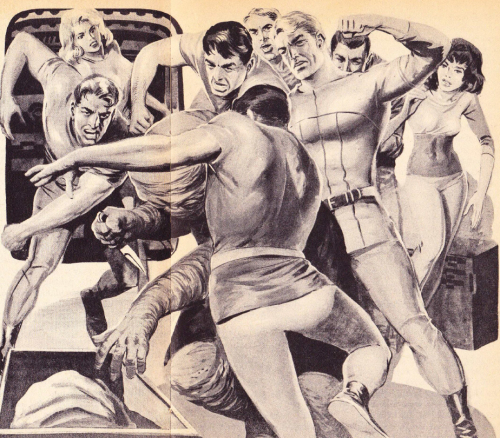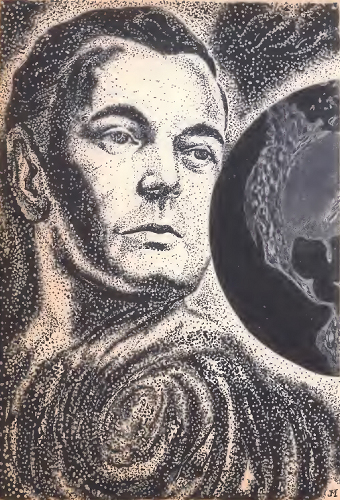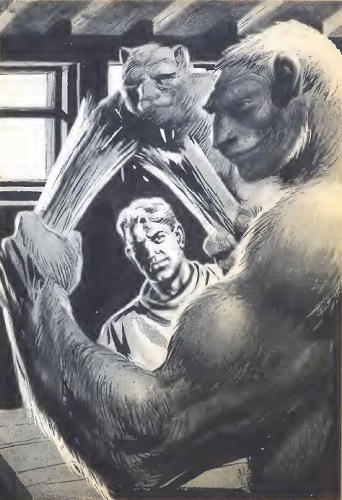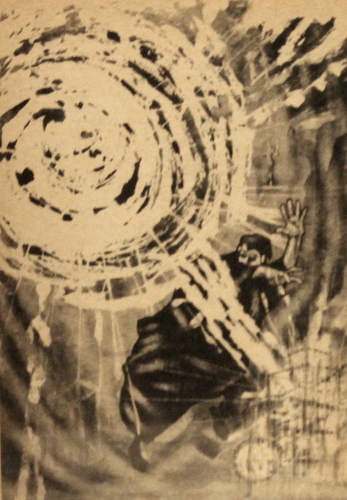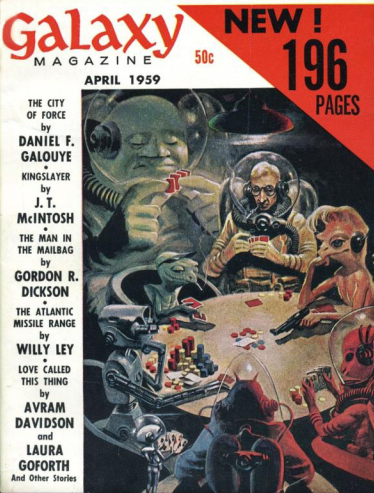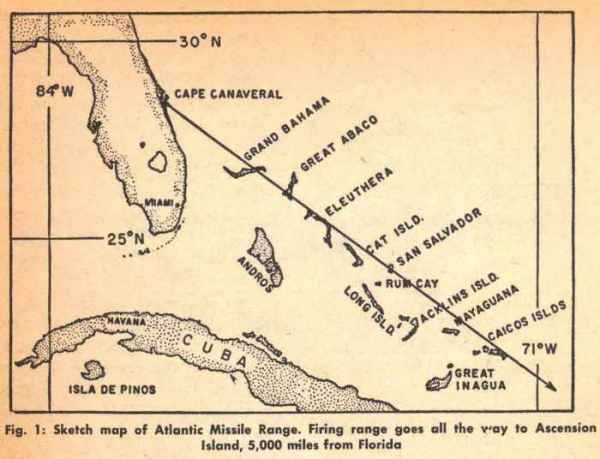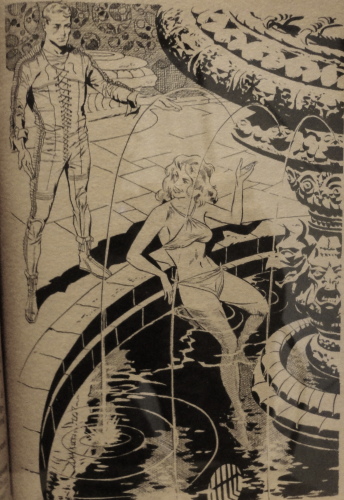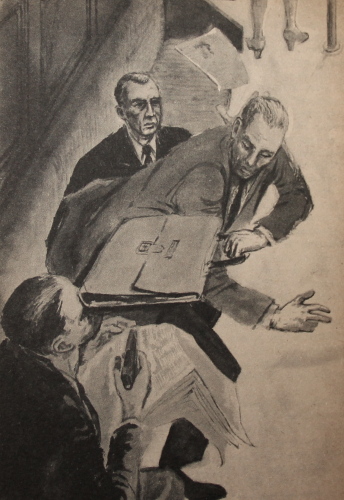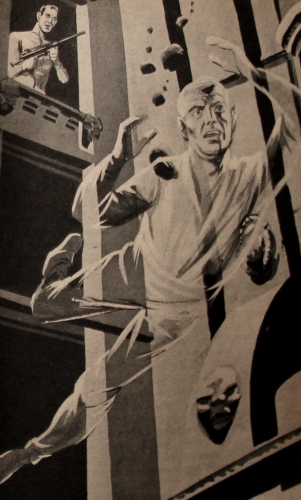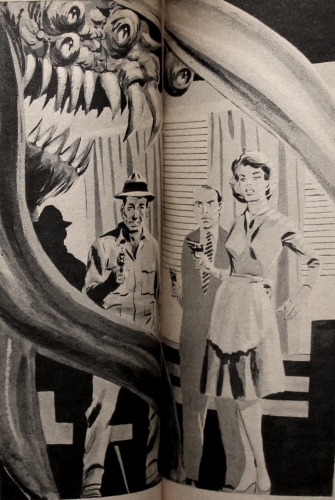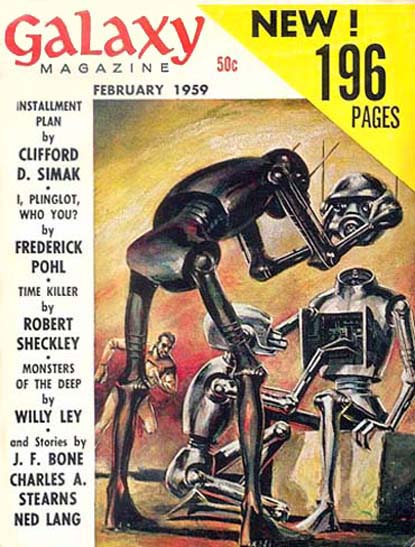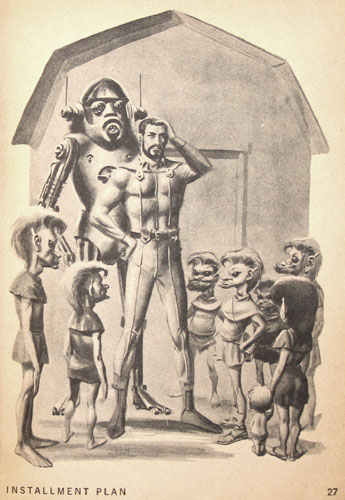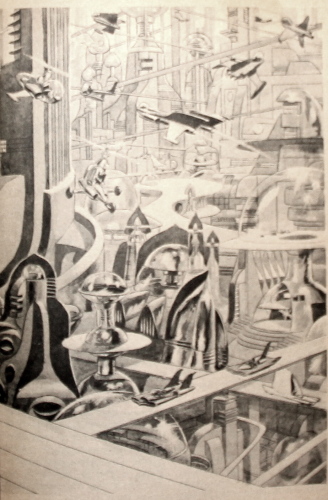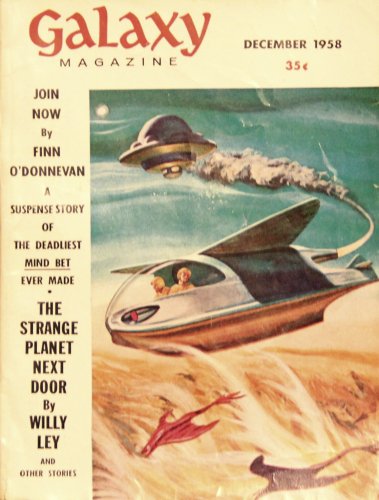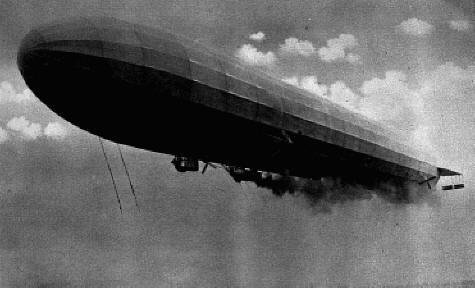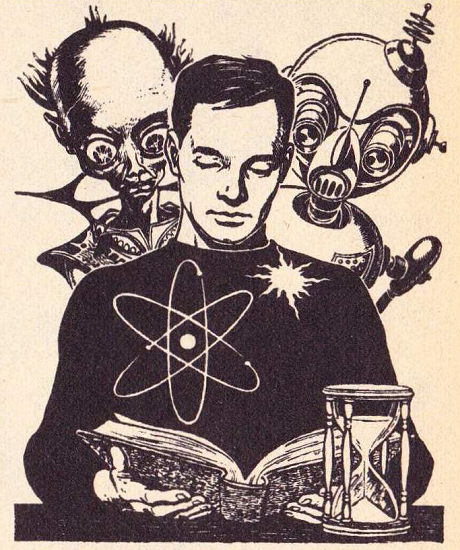
There's been big news in the space world over the weekend, but I want to talk about it next time so I can see how things shake out. Thus, without further ado, I move onto the rest of the extra-thick Galaxy June 1959.
Avram Davidson is a bit of a writing fiend–it seems I find one of his stories in every magazine I pick up, and they all tend toward the quite good. Take Wooden Indians is one of the good'ns. It's a delightfully confusing (at first) tale of time travel, artistic expression, and nostalgia for Americana, that straightens out nicely at the end. Of course, I imagine there are many out there who would use time travel to save the real Indians rather than their wooden likenesses, but that's another story (one I'd be interested in reading–smallpox inoculations handed out five hundred years ago might do the trick…)
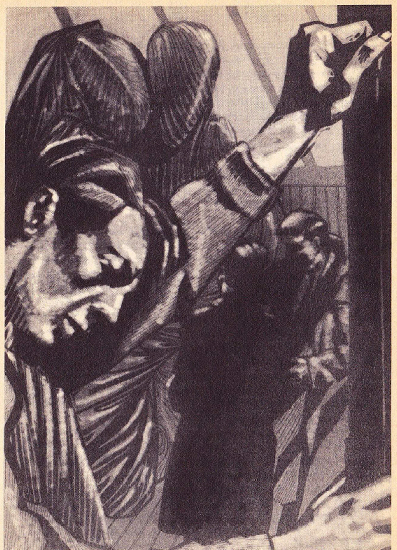
Willy Ley's article is, as usual, worthy reading. I particularly like his answer to the question, "What is the best size for a payload?" Answer: depends on what you're trying to do. If you want to map the Earth's magnetic fields, lots of small satellites are better than one big one. The Soviets like to brag on the size of their probes, but they are of limited utility if they only put up a few.
The next story is from prolific pulp writer, Richard Wilson, who spends most of his time writing for Future these days (I haven't picked up any copies). Traveling Companion Wanted has been described by one of my very favorite readers as a Victorian fantasy, wherein a space traveler falls into the ocean in his space suit and ends up swept by current into a globe-spanning underwater river. On his way, he ends up the unexpected guest of a subterranean race of advanced, Eskimo-ish natives. Unfortunately, they can't figure out how to unsuit the traveler, and he nearly starves (I found this bit rather horrific). But all's well that ends well–he makes it back to the surface with the resolution to revisit the fantastic realm he discovered. It looks like he'll be successful, too!
I'm afraid the "non-fact" article by Larry M. Harris, Extracts from the Galactick Almanack, really isn't worth the space it takes in the magazine. It's one of those "droll" pieces, this one about musical accomplishments of various aliens. Skip it.

Soft Touch, by Daniel F. Galouye, is another matter, entirely, though like his last story, it is frustratingly underdeveloped. In the future, there is a mutant strain of humanity that is utterly moral and good, incapable of lying or hurting a fellow person. They are treated poorly by their non-mutant neighbors because everyone hates a do-gooder. Very impactful and well-written stuff… but the ending is way too rushed. Another 5-10 pages would have been nice.
The final tale of the issue is No Place for Crime, by J.T. McIntosh. It's rare that a locked door mystery is told from the point of view of the criminals, and McIntosh keeps you guessing as to its outcome until the very end. One of the better pieces in the issue, and typical of the writer.
Given Pohl's masterpiece, Davidson and McIntosh's excellent work, the decent Wilson and Galouye stories, the fine Ley article, and the unimpressive Harris, I'd say this issue is a solid "4." I'd like Mr. Wood to stop drawing such lurid cheesecake illustrations, however…
See you on Wednesday with news… from SPAAAACCCCE!
(Confused? Click here for an explanation as to what's really going on)
This entry was originally posted at Dreamwidth, where it has comments. Please comment here or there.


